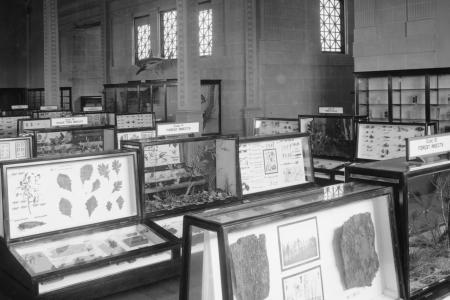Dissolving a museum or educational corporation's charter means the organization is ending operations and wishes to formally end the terms of their charter.
A museum or educational corporation might decide to dissolve due to a lack of membership or money, because the organization formed for a specific purpose that has been completed or is no longer relevant. Dissolving a chartered museum or educational corporation requires an act of the Regents.
Please read the New York State Education Department's Statement on Museum Deaccessioning here.
Steps to Dissolve
Step 1: The decision to dissolve must be agreed upon by the board of the museum or educational corporation with a three-fourths majority vote.
Step 2: An application must be sent to the Board of Regents to dissolve the corporation. A sample petition, board resolution, and tax affidavit can be downloaded below.
Step 3: The petition, board resolution, and tax affidavit must be completed, signed, and notarized by the board members in the following way:
- Petition: Notarized signatures from the Board President and Secretary (or any two officers) or three-fourths of the board of trustees.
- Board Resolution: Signed by the Board Secretary
- Tax Affidavit: Notarized signatures from the Board President and Secretary
Step 4: The petition (the original and two copies), board resolution (the original and two copies), tax affidavit (the original and two copies), and a check for $60 made out to the New York State Education Department should be mailed to the Office of Counsel at:
New York State Education Department, Office of Counsel
89 Washington Avenue, Room 148 EB, Albany, NY 12234
Step 5: The application will be reviewed by the Office of Counsel and the Chartering Program at the New York State Museum. Upon completion of both reviews, and assuming all the paperwork is in order, the application will be added to a future Regents Agenda to be voted on. It can take two to three months for an application to be reviewed, added to an Agenda and be voted on during a Regents Meeting.
Step 6: After being notified of the voting results the corporation should make an application to the Supreme Court within three months of the dissolution to direct the disposition of any remaining assets. The petition should be applied to the Supreme Court in the judicial district of the museum or educational corporation.
Go to the following website and select the county in which the museum or educational corporation's corporate address is: https://www.nycourts.gov/courts/cts-outside-nyc-SUPREME.shtml
Make sure the petition is duly verified and includes all the assets, their location and estimated value, and ascertainable debts.
Collections (including books, objects of art or objects of historical significance etc.) still held by the petitioning museum or educational corporation should be transferred to libraries, museums or educational institutions willing to accept them.
If the current charter of the museum or educational corporation includes a provision outlining the disposition of assets in the event of dissolution, that provision should be followed by the court as far as possible.
Any surplus monies, after the payments of debts and dissolution fees, can be directed by the court to be given to any educational, religious, benevolent, charitable, or other not-for-profit organization that the trustees of the museum or educational corporation indicate in their petition (as approved by the court).
During the process of dissolving the Board of Trustees will remain in office of the purpose of settling the museum or educational corporation's affairs.
The dissolution process is governed by the New York State Education Law §220.



